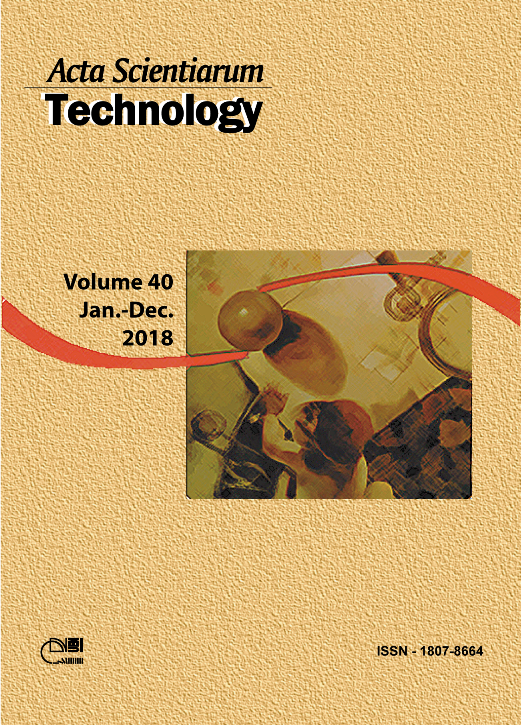<b>Homogenous regions and rainfall probability models considering El Niño and La Niña in the State of Pará in the Amazon
DOI:
https://doi.org/10.4025/actascitechnol.v40i1.37742Keywords:
climate change, cluster analysis, average annual rainfall, Amazon.Abstract
The determination of homogeneous regions with precipitation and probability models when considering the El Niño- Southern Oscillation (ENSO) phenomenon is important for the planning of water resources and for the study of how climate change affects precipitation regimes. Thus, six homogeneous regions with annual mean precipitation were determined through a cluster analysis using Ward's agglomeration method and applied to a historical series of 31 years (1960-1990) at 413 satellite monitoring points in the state of Pará, where the selected years occurred during an El Niño or a La Niña event. When adjusting the probability models, the chi-square test was applied to 413 monitoring points spread over the six homogeneous regions during years with a La Niña or an El Niño, as well as the complete set of years. The normal model (i.e., the normal function) had the best fit, with chi-square values below 3.84 (tabulated chi-square values). The model was validated using 12 rainfall stations of the National Water Agency (ANA), which were distributed across the six homogeneous regions. In this case, the chi-square test for the 12 stations also had values lower than 3.84. A good fit between the observed and the regionalized data demonstrated the potential of the methodology developed and used for estimating annual average precipitation probabilities.
Â
Downloads
Downloads
Published
How to Cite
Issue
Section
License
DECLARATION OF ORIGINALITY AND COPYRIGHTS
I Declare that current article is original and has not been submitted for publication, in part or in whole, to any other national or international journal.
The copyrights belong exclusively to the authors. Published content is licensed under Creative Commons Attribution 4.0 (CC BY 4.0) guidelines, which allows sharing (copy and distribution of the material in any medium or format) and adaptation (remix, transform, and build upon the material) for any purpose, even commercially, under the terms of attribution.
Read this link for further information on how to use CC BY 4.0 properly.











8.png)




